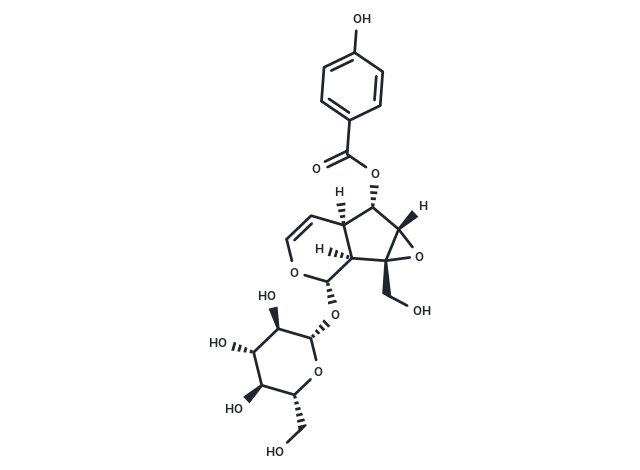Shopping Cart
- Remove All
 Your shopping cart is currently empty
Your shopping cart is currently empty

Catalposide is a potent inducer of (HO)-1 isolated from Catalpa ovate G. Don (Bignoniaceae). Catalposide possesses antioxidant, anti-apoptotic, anti-microbial, anti-tumoral, and anti-inflammatory properties.

| Pack Size | Price | Availability | Quantity |
|---|---|---|---|
| 1 mg | $228 | In Stock | |
| 2 mg | $383 | In Stock | |
| 5 mg | $686 | In Stock | |
| 10 mg | $977 | In Stock | |
| 25 mg | $1,450 | In Stock | |
| 50 mg | $1,960 | In Stock |
| Description | Catalposide is a potent inducer of (HO)-1 isolated from Catalpa ovate G. Don (Bignoniaceae). Catalposide possesses antioxidant, anti-apoptotic, anti-microbial, anti-tumoral, and anti-inflammatory properties. |
| In vitro | Catalposide, within a concentration range of 1-1000 ng/mL, demonstrates an inhibitory effect on the production of TNF-alpha, IL-1β, and IL-6 in RAW 264.7 macrophages[1]. |
| Alias | Hydroxybenzoyl catalpol |
| Molecular Weight | 482.43 |
| Formula | C22H26O12 |
| Cas No. | 6736-85-2 |
| Smiles | [H][C@@]12O[C@]1(CO)[C@@]1([H])[C@H](O[C@@H]3O[C@H](CO)[C@@H](O)[C@H](O)[C@H]3O)OC=C[C@@]1([H])[C@@H]2OC(=O)c1ccc(O)cc1 |
| Relative Density. | 1.68g/cm3 |
| Storage | store at low temperature,keep away from direct sunlight | Powder: -20°C for 3 years | In solvent: -80°C for 1 year | Shipping with blue ice. |

Copyright © 2015-2025 TargetMol Chemicals Inc. All Rights Reserved.